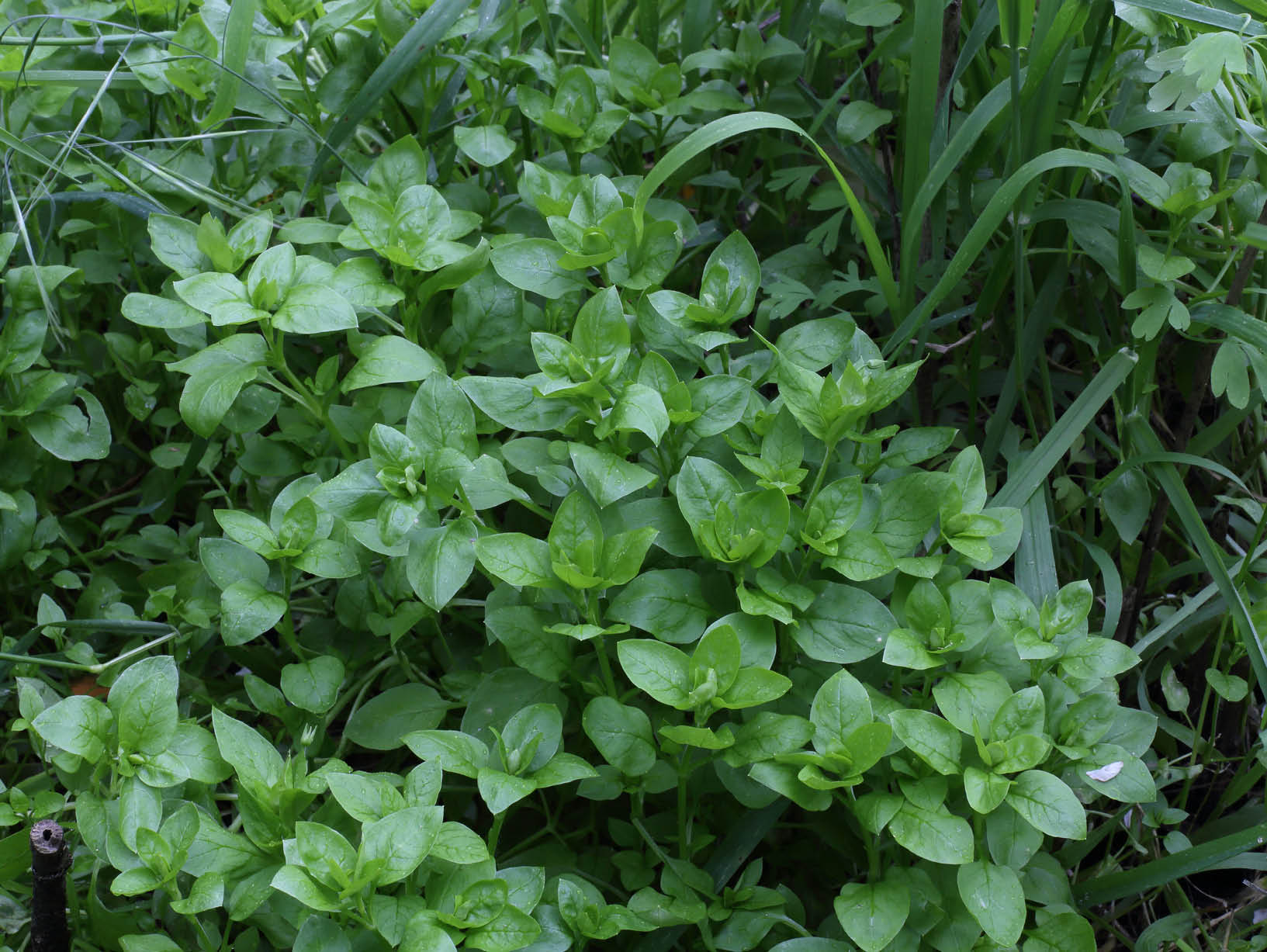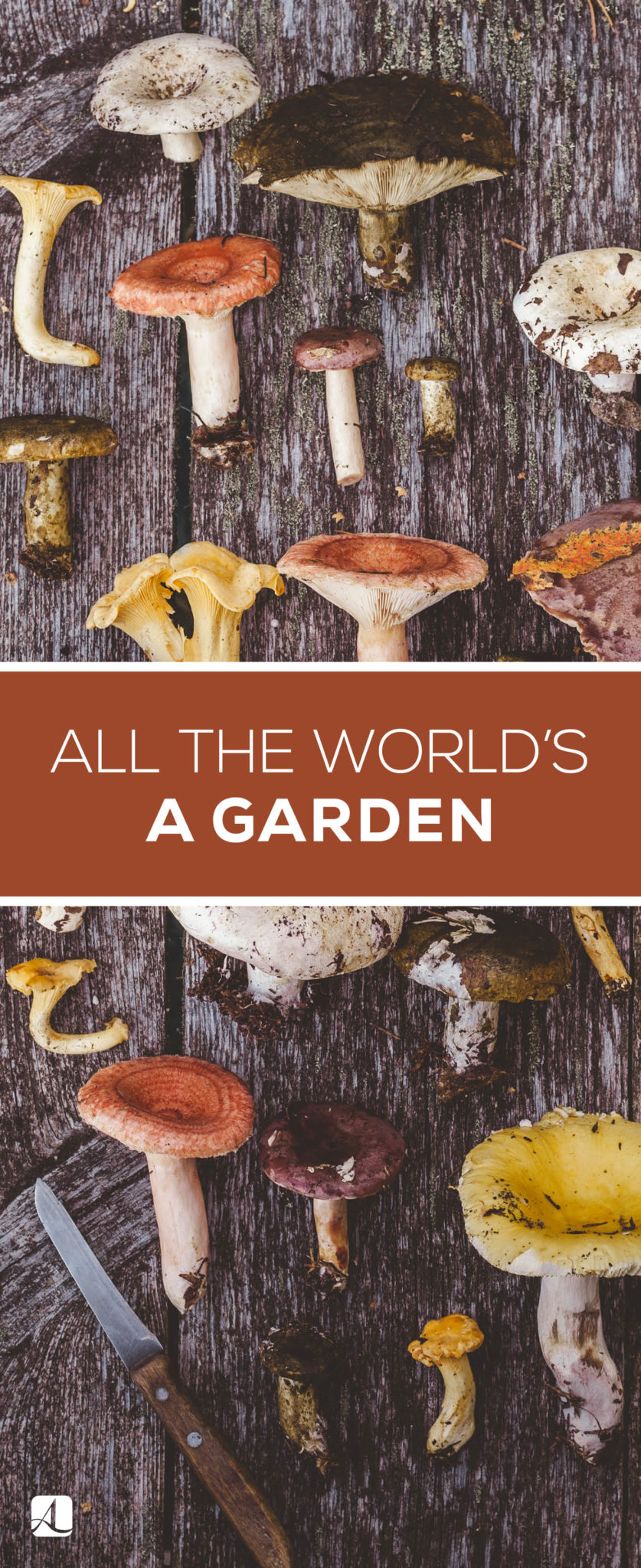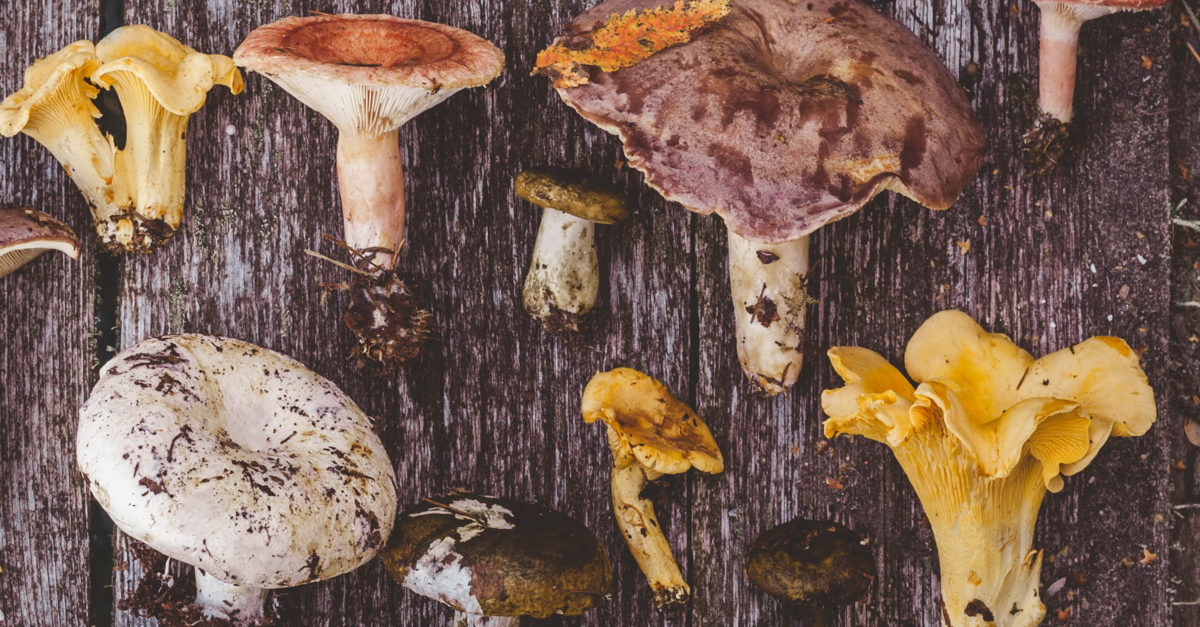All the World’s a Garden
An award-winning author and internationally recognized expert on edible wild plants, Samuel Thayer reveals what watered the seeds of his lifelong fascination with foraging.

Where did you grow up? Who introduced you to foraging?
I grew up in central and southern Wisconsin—mostly in the city, but I spent a lot of time in rural areas. I first remember my older sister teaching me to eat wood sorrel [an edible weed] when I was four years old. It was lemony and sour, and we all thought it was delicious.
What was your trajectory to becoming an expert in foraging for wild edible plants?
As a child, I wanted to learn to feed myself. I wanted to run away and live in the woods. I started reading plant and mushroom books and trying the things I read about at an early age. By the time I was a teenager, I was well versed in botany and mycology and knew a lot about nature. I graduated from high school and ran away to live in the woods. I built a little log cabin and tried to live off the land. But I got lonely, so I decided to organize a plant walk to meet friends and put up some flyers at a local college library. That’s how my path to teaching began. The plant walk morphed into leading foraging tours when I was nineteen years old. The learning part has not stopped or even slowed down.
Did you have another career as well?
I did a lot of jobs—most of which I liked and excelled at—but I got bored after a while. I did seasonal farm work and construction, washed dishes and cooked, retreaded semi tires, worked in sawmills and fast food, and cashiered at a gas station. I did field work on two ecological research projects: one with frogs and one with plants. I don’t know if any of this could have been called a career, though. Eventually, I found things that I never wanted to stop doing, such as making maple syrup, harvesting wild rice, planting an orchard, teaching, and writing.
What do you find rewarding about leading tours?
I like to be reminded that I’m not alone in my interest—which, for most of my childhood, I felt like I was. I also think that foraging attracts an incredibly pleasant crowd of intelligent, thoughtful, and kind people. I like how it mixes people from all parts of the political spectrum, all races and nationalities, all genders, different social classes, and rural and urban backgrounds in a common group with a common interest. I love learning from the participants who always have something to teach me. I don’t just learn pieces of their specific knowledge, but I learn how people learn, which makes me a better teacher.

Does teaching come naturally to you?
It does, I think. At least people tell me that. But I have definitely worked on my craft. Insecurity makes for a poor teacher, and I have lost most of what I started with because I know I’m doing what I was meant to do. I share. I explain. I try to be clear. I tell the truth. I admit when I don’t know the answer. I acknowledge other viewpoints and explain why I hold mine. I listen to every question and try to meet people where they’re at in the journey of learning. I try to connect the little details to the bigger picture. I try to encapsulate my excitement and hand it to the audience so they can kindle their own because this is what will drive them to learn once they have left the guided foraging walk. I try to give them realistic expectations.
Are there certain foods you primarily forage for? Are you frequently adding to your repertoire?
Some of the things I spend the most time gathering are wild rice, hickory nuts, butternuts, black walnuts, hazelnuts, acorns, wapato [a wetland tuber], maple and birch syrup, blueberries, serviceberries, and cranberries. I learn several new plants and mushrooms each year. I also learn better ways to harvest and process foods through experimentation and through studying different food traditions.
Will you talk about a few interesting finds that many people may not be familiar with?
This is a challenging question to answer because the average American has heard of only a dozen or so wild edibles, like blackberries and blueberries, and maybe morel mushrooms. Even avid foragers are generally only familiar with about half or a third of the wild edibles on our continent; the other wild edibles are obscure and almost never collected anymore.
So much of our collective cultural amnesia about food is due to colonialism, when many food traditions were erased and marginalized. The extent of this is deeper and more pervasive than the general public would ever imagine. For example, in eastern North America we have a native oil-crop tree, the yellow-bud hickory, which is to our region what the olive is to the Mediterranean. It is just as practical, just as economical, just as healthy and delicious, and it had a tradition dating back thousands of years—yet the knowledge of this food plant went essentially extinct for 160 years.
Do you have some principles you never stray from when foraging?
Yes. Never eat something unless you know what it is, always consider the long-term sustainability of your actions as a forager, and be respectful of other people using the land.
Have you ever learned the hard way that something is inedible?
Ediblility is not a yes-or-no question. The determination of edibility is based on four separate qualities. To be edible, an item must be nontoxic, nutritive, digestible, and labor-efficient. These qualities are all assessed on a continuum, rather than being binary. Different foods are edible in different ways. Cinnamon is edible as a spice but not as a bread flour. Potatoes are edible cooked but not as a raw salad vegetable. When you are experimenting with foods for which you have no cultural knowledge, and for which virtually no knowledge is available from any source, part of that experimentation is always to determine the limits of edibility or the applicable uses. The relevant question is not so much “Is this edible?” but “How is this edible?”

Do you shop at grocery stores and eat at restaurants, too?
We forage for about half our calories. We shop at grocery stores—mostly for things that we like but cannot forage. We are not absolutists or extremists or fad followers. We eat at restaurants infrequently as well.
Where do you go foraging?
Everywhere I can: my own property in northern Wisconsin, public lands where it is allowed, and the lands of neighbors and friends from whom I have permission.
What are high-prep foods?
There is a very long path and a lot of work from a wheat field to a pizza crust. Most of our staple foods are like this: they require equipment, work, and skills to utilize. Maple syrup and wild rice are two other well-known examples.
If you were stranded in a forest or an island, would you be able to survive by foraging?
In a forest, almost certainly, and maybe on an island if it were big enough. But in both cases it would be difficult because any wilderness on Earth is not likely a good foraging spot. Wilderness is not random. The best places for foraging have already been built up by humans a long time ago. Give me Chicago or Cleveland in 1650, and that would be a forager’s paradise.
What was the impetus for writing a book?
I realized that I had information that other people wanted. I had spent so much time figuring this stuff out, it seemed a shame not to share it. I also think our society desperately needs to rekindle our relationship to nature—for our health and for the health of the land. I truly believe that foraging is an absolute necessity for healing and sustainability.
What advice would you give to people interested in foraging?
Begin where you see plants every day: your backyard, your garden, a park, the office hedgerow, or a country roadside where you walk your dog.
To identify a plant is not as easy as beginners think, and it takes work. Find a book, meet some people, and learn some words. Look at plants long and hard and repeatedly. Foraging is the most rewarding thing you’ll ever do, but it won’t come without effort. Instead of trying to learn “foraging,” learn a plant and how to use it. Then, whenever you’re ready, learn another one.
For more info, visit foragersharvest.com
*The photos in this article should not be used as a guide for personal foraging. Always consult an expert before consuming wild plants.






















